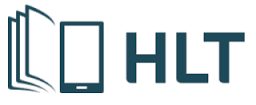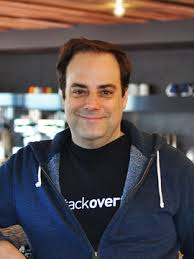Three Steps to Acing Your Technical Interview
 Jared Silver ’19 is a first year student at Babson, whose personal mission is to change people’s lives through technology, entrepreneurship, and unconventional problem solving. An entrepreneur and self-taught programmer, he is an active member of C.O.D.E. — Community of Developers & Entrepreneurs — a student organization where students learn and create viable software solutions for problems they see around them through coding, programming, and problem solving.
Jared Silver ’19 is a first year student at Babson, whose personal mission is to change people’s lives through technology, entrepreneurship, and unconventional problem solving. An entrepreneur and self-taught programmer, he is an active member of C.O.D.E. — Community of Developers & Entrepreneurs — a student organization where students learn and create viable software solutions for problems they see around them through coding, programming, and problem solving.
C.O.D.E.’s efforts are rooted in the fact that technology continues to make a significant mark in the way products and services are delivered, as well as how companies operate. Skills such as computer programming, 2D, and 3D design are fundamentally important in running an efficient business in the 21st century, regardless of the industry. Students who can show employers that they already have the skills and experience to start contributing in their job or internship from day one continue to have a “leg up” in the job market.
 With this mindset, Jared leveraged his entrepreneurial experience and self-taught programming skills in a series of technical interviews with Higher Learning Technologies earlier this semester and landed a Summer Software Development Internship for Summer 2016. I asked Jared to share his insights on preparing for and succeeding in a technical interview. I am delighted that he agreed. Additional resources can be found in Career Beam, which all Babson students can access through their student portal.
With this mindset, Jared leveraged his entrepreneurial experience and self-taught programming skills in a series of technical interviews with Higher Learning Technologies earlier this semester and landed a Summer Software Development Internship for Summer 2016. I asked Jared to share his insights on preparing for and succeeding in a technical interview. I am delighted that he agreed. Additional resources can be found in Career Beam, which all Babson students can access through their student portal.
The following guest blog was authored by Jared Silver ’19:
Whether you’re a college student seeking your very first internship or a full-stack developer with decades of experience, the very words “technical interview” probably cause your pulse to rise and a shiver to go down your spine.
The good news is that if you’ve made it this far, you’ve already set yourself apart from most: companies wouldn’t ask one of their skilled developers to stop writing code and interview you for an hour unless they saw something special in you. So, congratulations!
But now that you’ve made it this far, how can you prepare for what’s next? Simple: approach it the same way you approach developing software.
Step One: Understand the User
When you’re building software, the first step is to understand the user. In this context, that means understanding the employer, the purpose of the technical interview, and how the interview factors into a hire/no-hire decision.
 Luckily, there’s no shortage of interviewers who have shared their thoughts on these very topics. For me, the most helpful was an article written by Joel Spolsky (co-founder of Trello and Fog Creek Software, and CEO of Stack Exchange) in 2006.
Luckily, there’s no shortage of interviewers who have shared their thoughts on these very topics. For me, the most helpful was an article written by Joel Spolsky (co-founder of Trello and Fog Creek Software, and CEO of Stack Exchange) in 2006.
According to Spolsky, the interviewer should be “looking for people who are 1. Smart, and 2. Get things done.” With this in mind, you can start thinking about how to prepare for and then approach the interview.
Step Two: Prototype and Iterate
Just like when you’re building software, you usually have to build a rough prototype before you can produce something incredibly polished. In this context, you are the prototype.
If you want to provide the user with the optimal experience (i.e.; demonstrate that you are smart and get things done), you’ll want to brush up on some common interview questions and topics.
If you haven’t gone through this sort of training in the past, there’s a good chance you’ll find it pretty challenging and frustrating. What’s important to remember is that you’re the prototype at this stage: keep iterating, and eventually you’ll come up with the polished product everyone desires.
Keeping your user in mind, you’ll want to tailor your preparation to the needs of the company. If you’re interviewing at a company that specializes in network security, for instance, you may want to look into questions on cryptography. Or, if you’re interviewing at a startup that runs a big social network, you might want to think about database design.
Sites like Interview Cake, Coding for Interviews, and even Khan Academy are great for brushing up on some basic computer science knowledge and practicing for your interview.
Step Three: Launch!
You’ve been pouring your heart and soul into this, and now it’s finally time to show the world what you’ve accomplished.
Every launch has its bugs, and it’s important to remember that the interviewer isn’t expecting you to be perfect. By working through your entire process, and especially by making and recovering from mistakes, you demonstrate to the interviewer that you’re smart and have the propensity to get things done.
Pay close attention, ask smart questions, and don’t be afraid to ask for clarification. Keep in mind how passionate you are about software development, and let that passion shine through.
Even if you don’t end up getting the gig, every opportunity to practice this process is an opportunity to better understand the user and continue iterating on your personal prototype. Keep it up, and eventually you’ll make it where you want to be.
